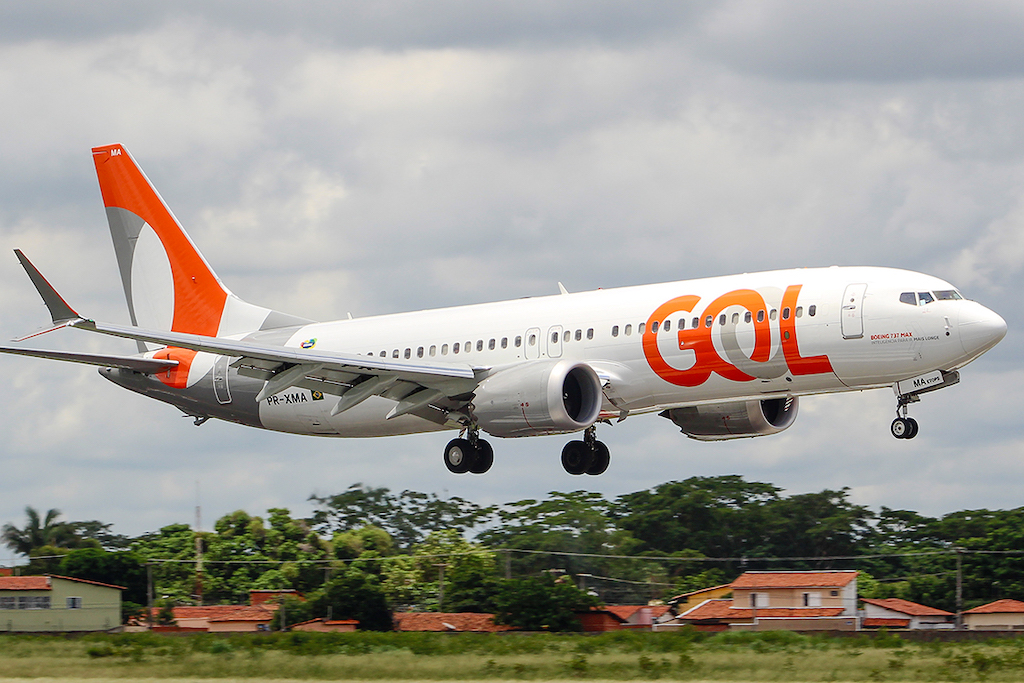Why Brazilian Airline Gol Actually Likes Higher Fuel Prices in 2022

Photo Credit: Gol has accelerated 737 Max deliveries in 2022. Flickr / Alexandro Dias
Gol is optimistic about 2022, betting that high commodity prices coupled with capacity discipline in Brazil will accelerate its financial recovery to at or above pre-pandemic levels.
The optimism is somewhat counterintuitive outside of Brazil. Despite quickly recovering travel demand, airlines in Europe and North America face surging fuel prices and future uncertainty owing to Russia's invasion of Ukraine in February. However, in Brazil where commodities — including oil — are a large portion of the economy, high oil and other commodity prices have historically translated to strong corporate demand for the country's airlines.
Gol already sees bookings in line with 2019 levels in March, April, and May, said Chief Financial Officer Richard Lark during the airline's fourth-quarter earnings call on March 14. However, yields for those bookings are roughly 30 percent higher than three years ago, and predominantly from leisure travelers. This indicates to Gol, which historically has carried a greater percentage of business travelers than holidaygoers, that there is significant yield upside as road warriors return.
Corporate travel was at 65-70 percent of 2019 levels in the fourth quarter, and is forecast to recover to 80-85 percent by the second quarter, Lark said. And that corporate recovery has largely occurred without Brazil's big commodity companies, including Petrobras and Vale, which suggests a significant business travel upside if commodity prices remain high.
The bullish outlook comes as airlines taper capacity plans in Brazil. In an update released Monday, Gol pulled down its 2022 capacity forecast by 5 percentage points to up 65-75 percent year-over-year on expectations of a 30 percent year-over-year increase in fuel expanses. The airline flew just 41 percent of its 2019 capacity last year; however, that number stood at 67 percent in the fourth quarter. Gol's outlook includes resuming U.S. flights in May, including between Brasilia and both Miami and Orlando, and Fortaleza and Miami.
Speaking at a Raymond James investor conference on March 7, Azul Chief Financial Officer Alex Malfitani said the carrier was likely to cut second quarter capacity as a result of high fuel prices. He echoed Lark forecasting improving corporate demand in the country. Azul is the largest airline in Brazil.
"The name of the game now is capacity management," said Gol CEO Paulo Kakinoff.
Gol remains focused on its other corporate initiatives this year. Top of mind is fleet: The airline plans to take delivery of 21 Boeing 737-8s in 2022, and end the year with 44 of the latest-generation aircraft. Of those deliveries, 12 are financed under a $600 million deal with Castlelake that includes 10 finance leases and two sale-and-leasebacks. Gol intends to return 20 737-700s and -800s to lessors as the new Maxes arrive, which resulted in a one-time 1.6 billion reais ($313 million) net charge in the fourth quarter.
The fleet update will drive an 8 percent reduction in unit costs — including fuel — from the shift to more fuel-efficient Maxes from older 737s, said Lark. In addition, the new aircraft will add some incremental capacity as they replace some smaller 737-700s.
Gol forecasts net revenues of 13.7 billion reais in 2022, or nearly the 13.9 billion reais it brought in in 2019. And an earnings before interest and taxes margin of 10 percent, or 5 points lower than in three years earlier.
In the fourth quarter, Gol lost 2.8 billion reais on 2.9 billion reais in revenues. Passenger unit revenues were up 17 percent and unit costs excluding fuel 68 percent jumped year-over-two-years. Passenger traffic was down nearly 33 percent compared to 2019.
Gol lost 7.2 billion reais on 7.4 billion reais in revenues in 2022.
